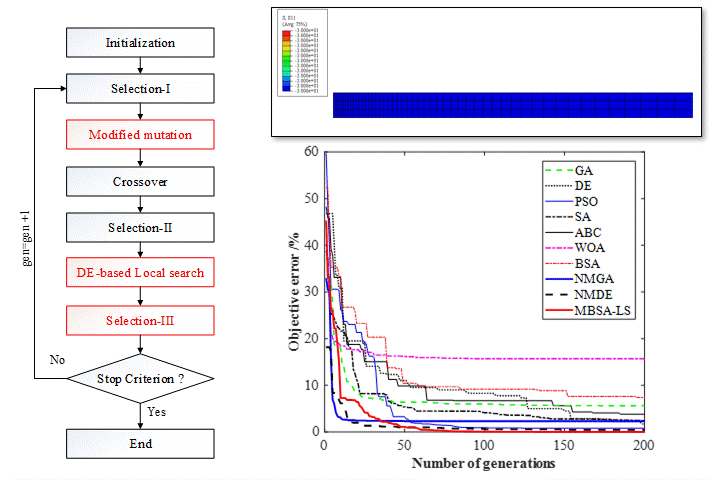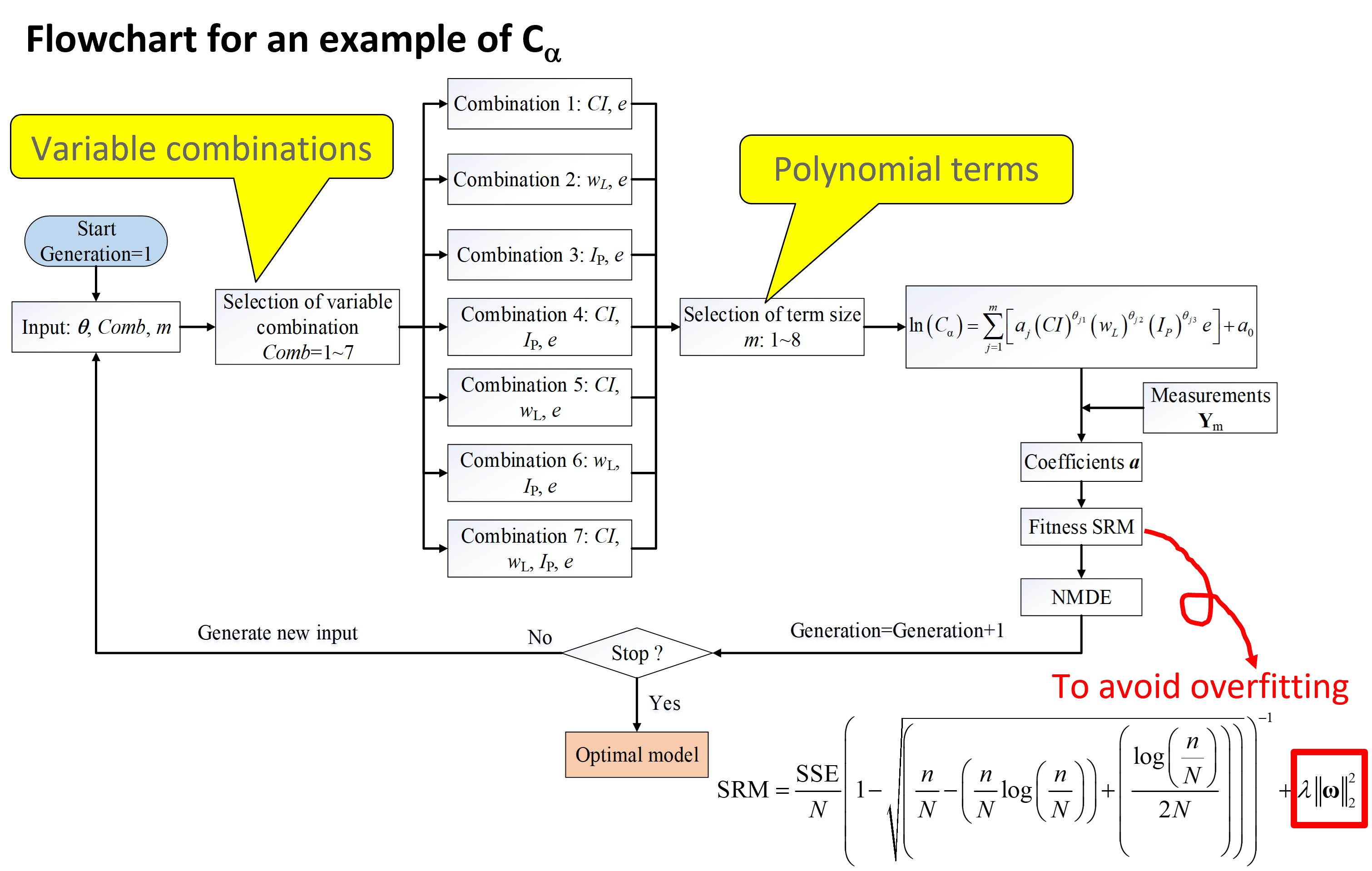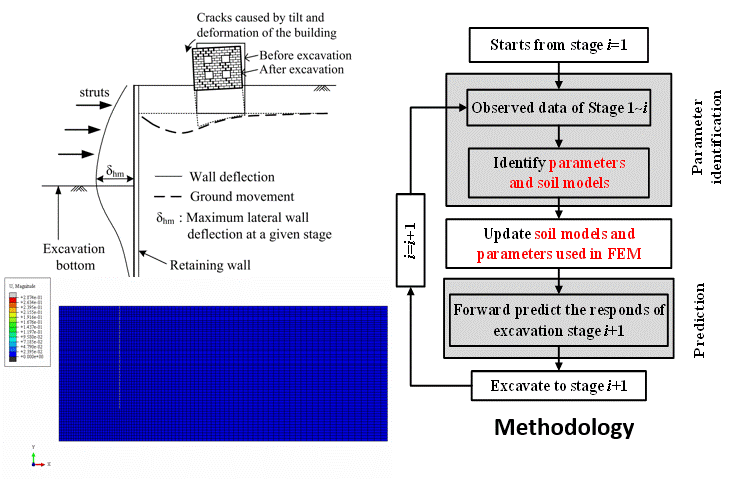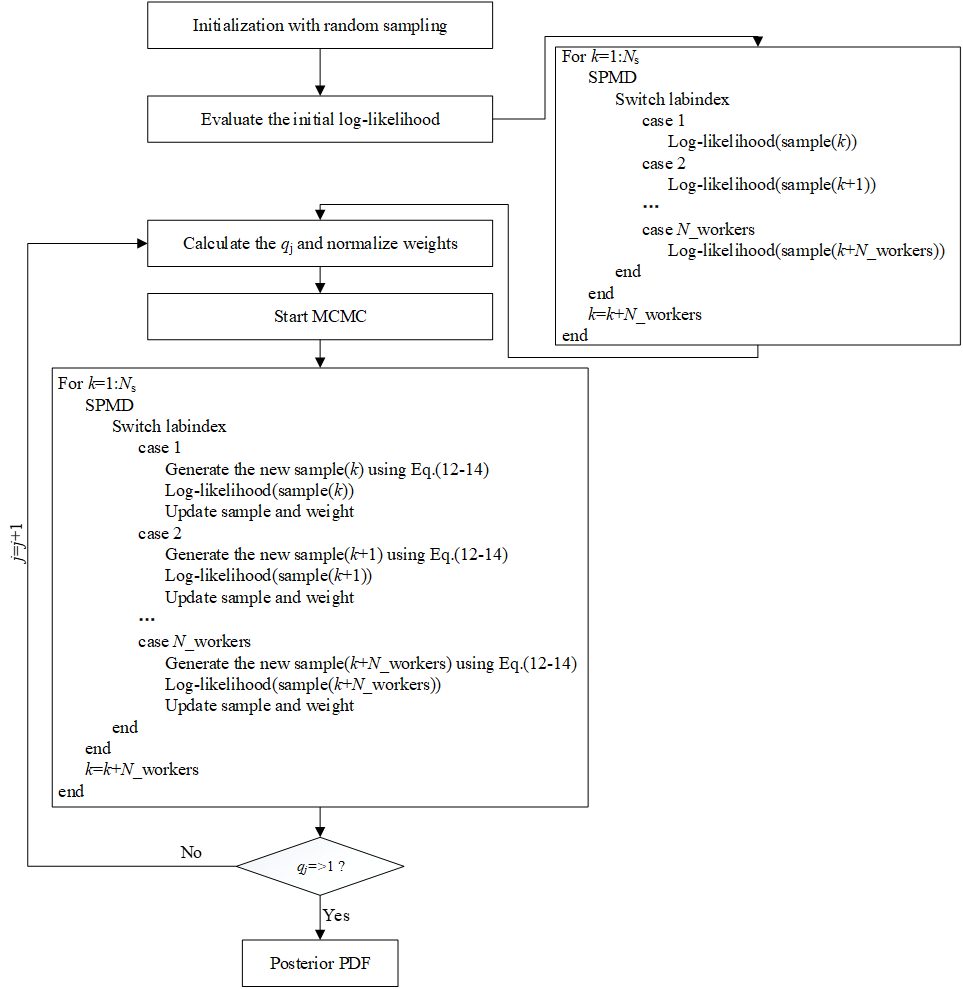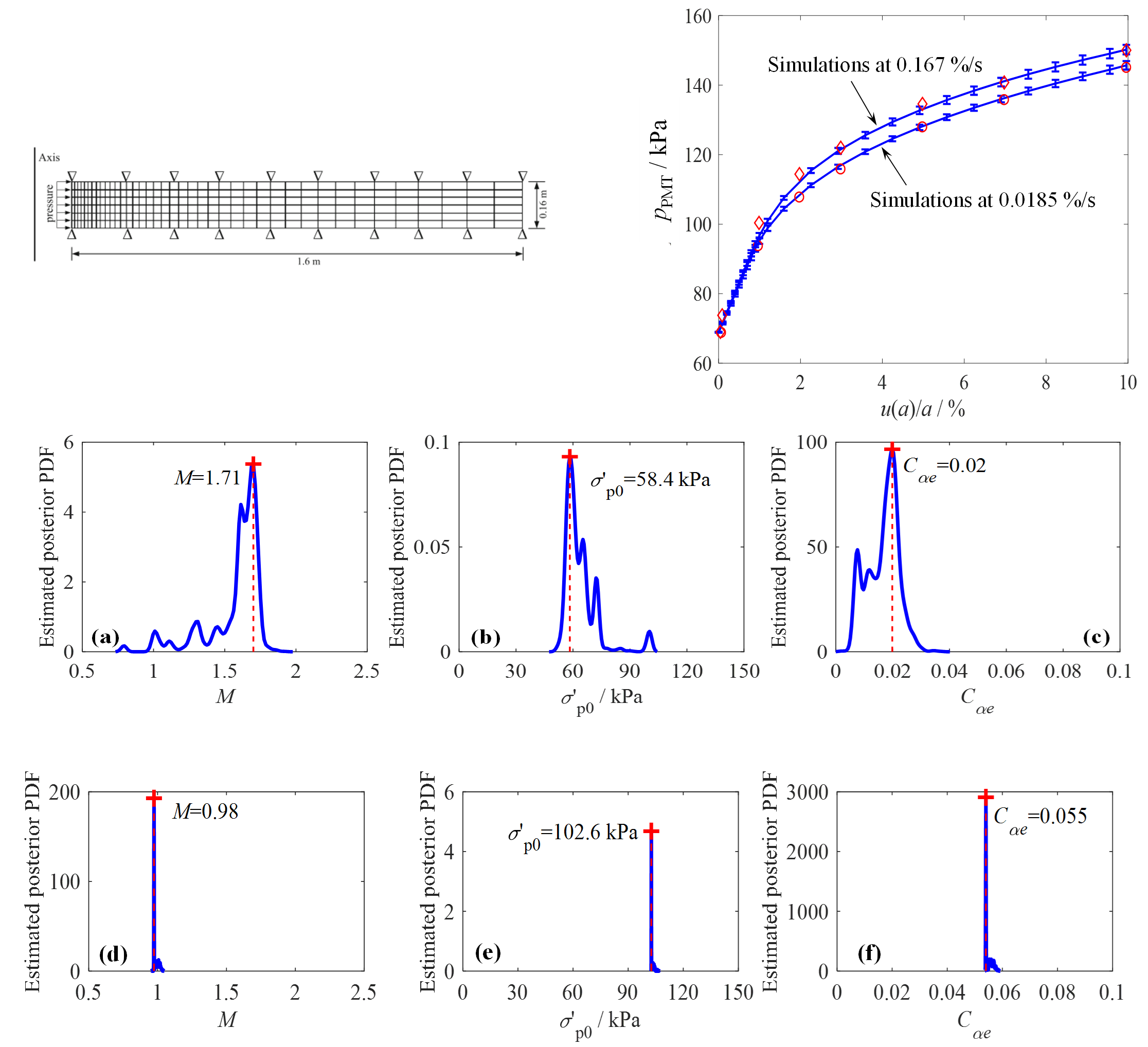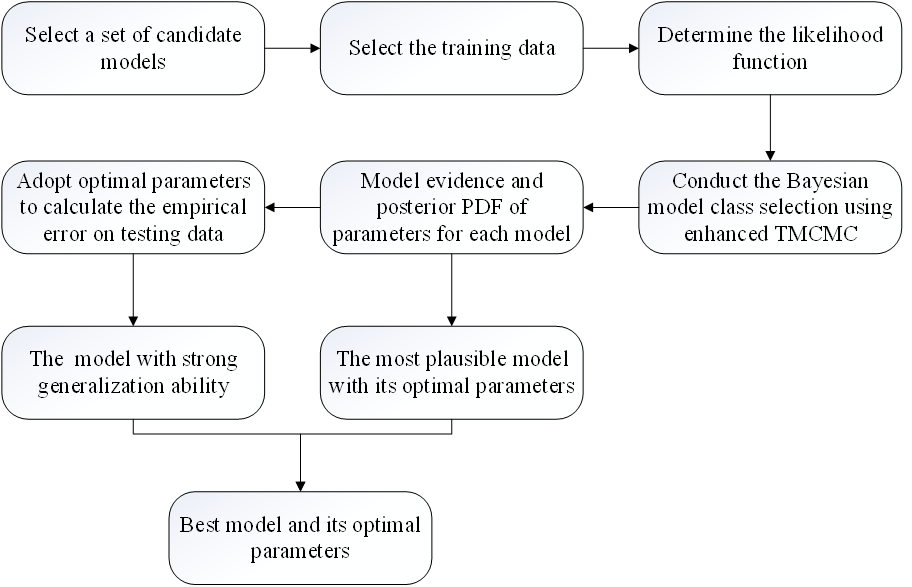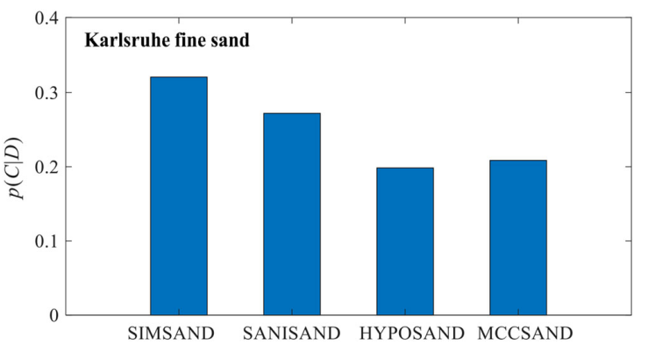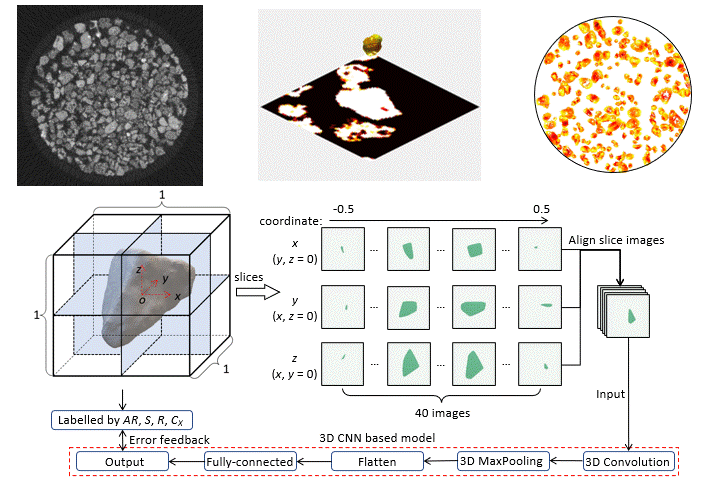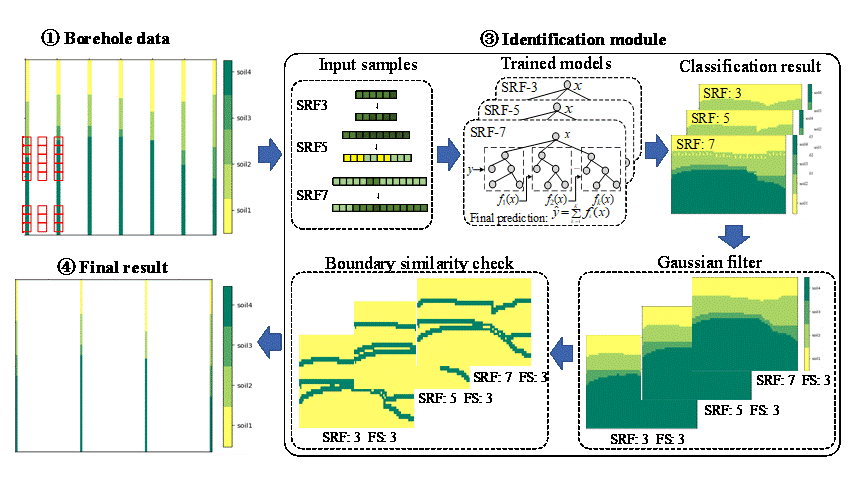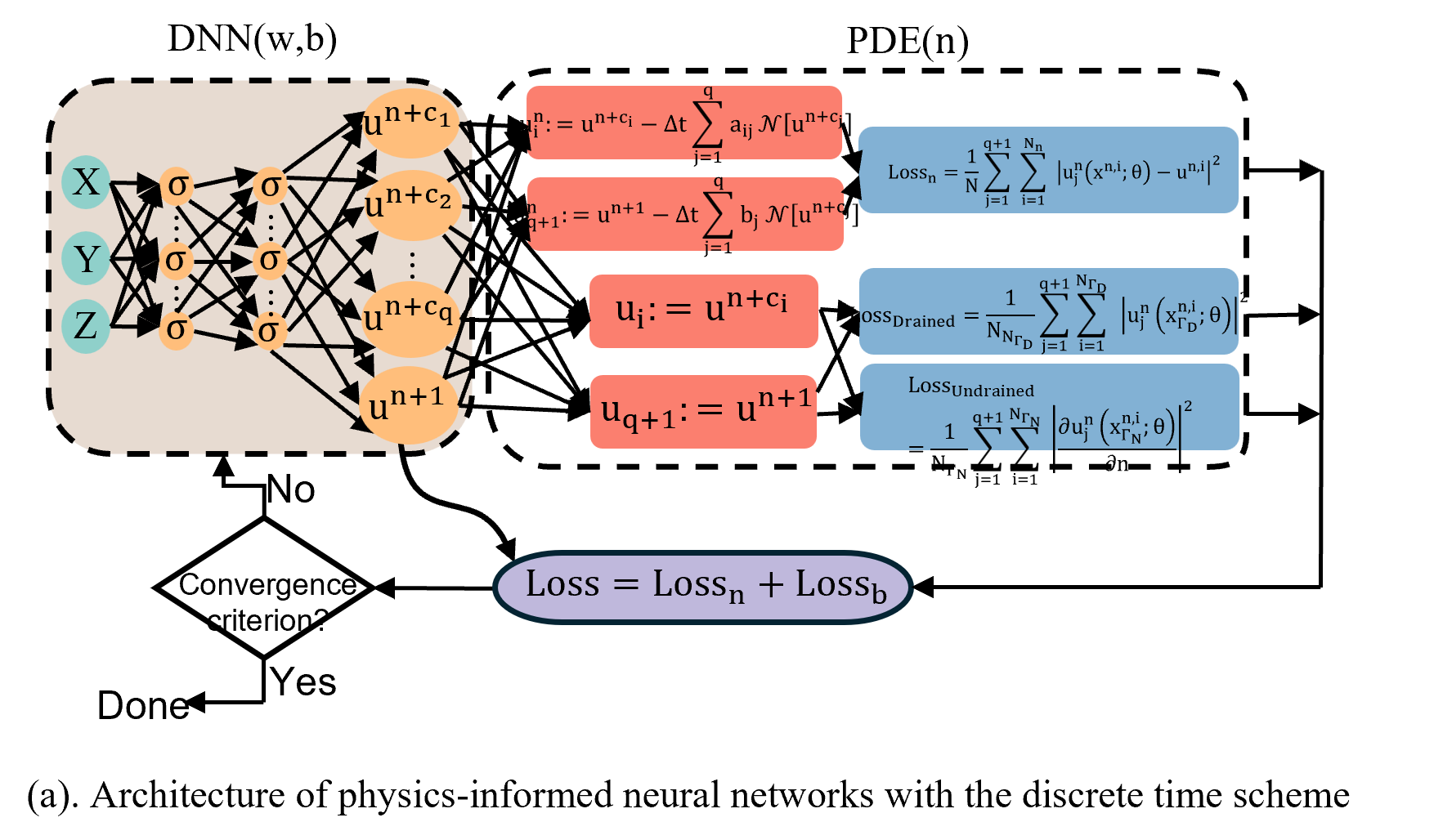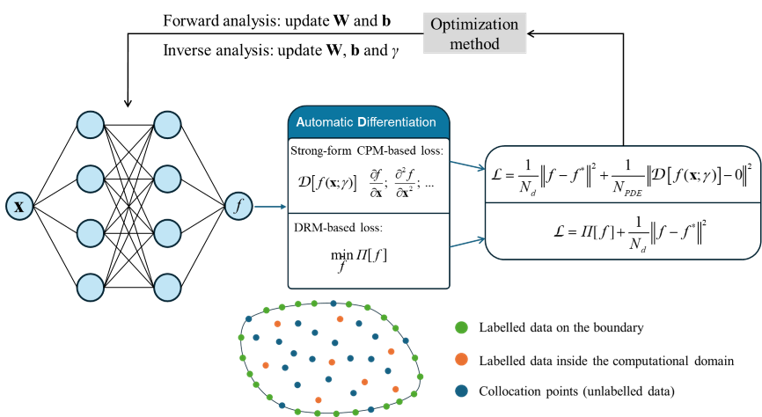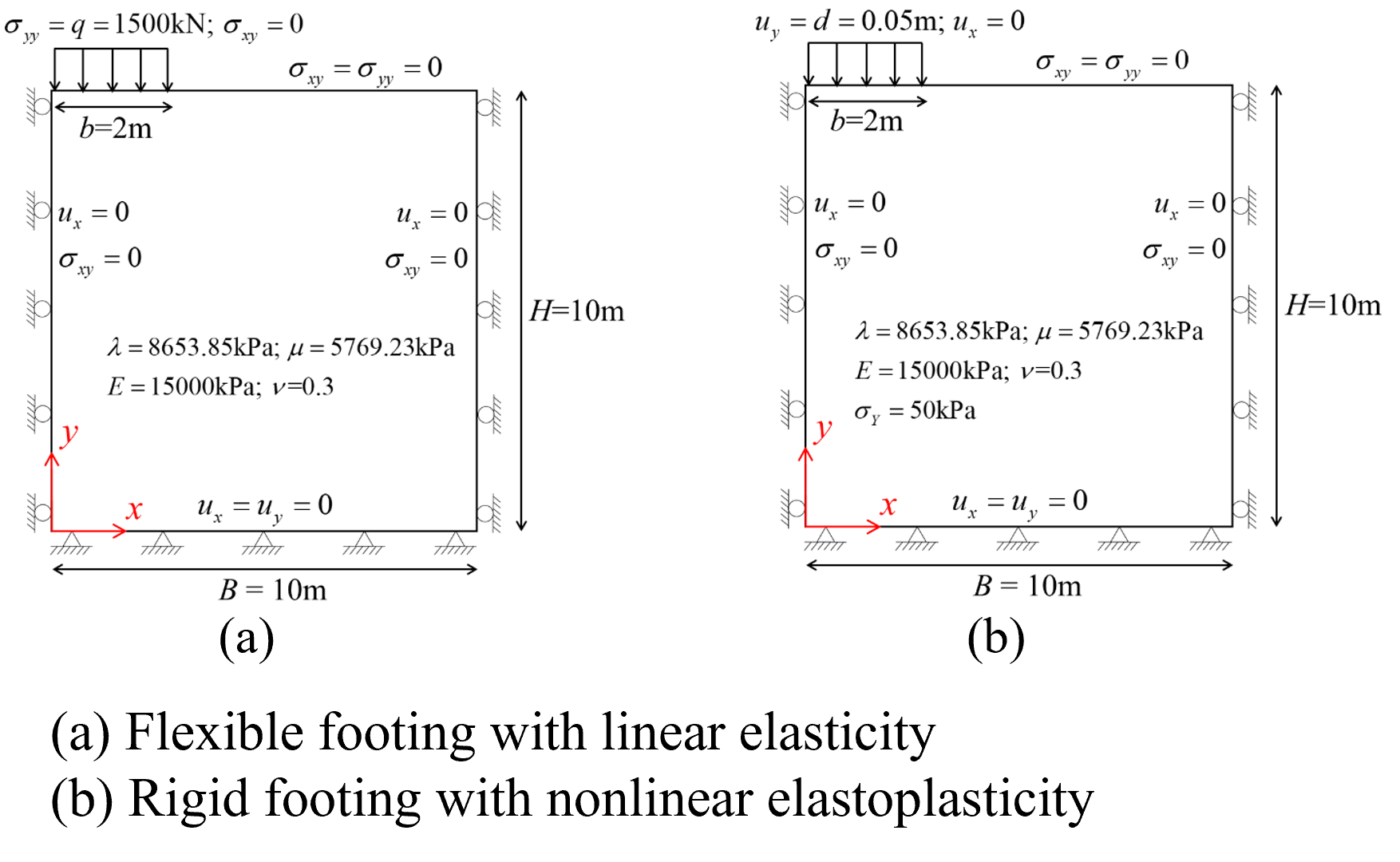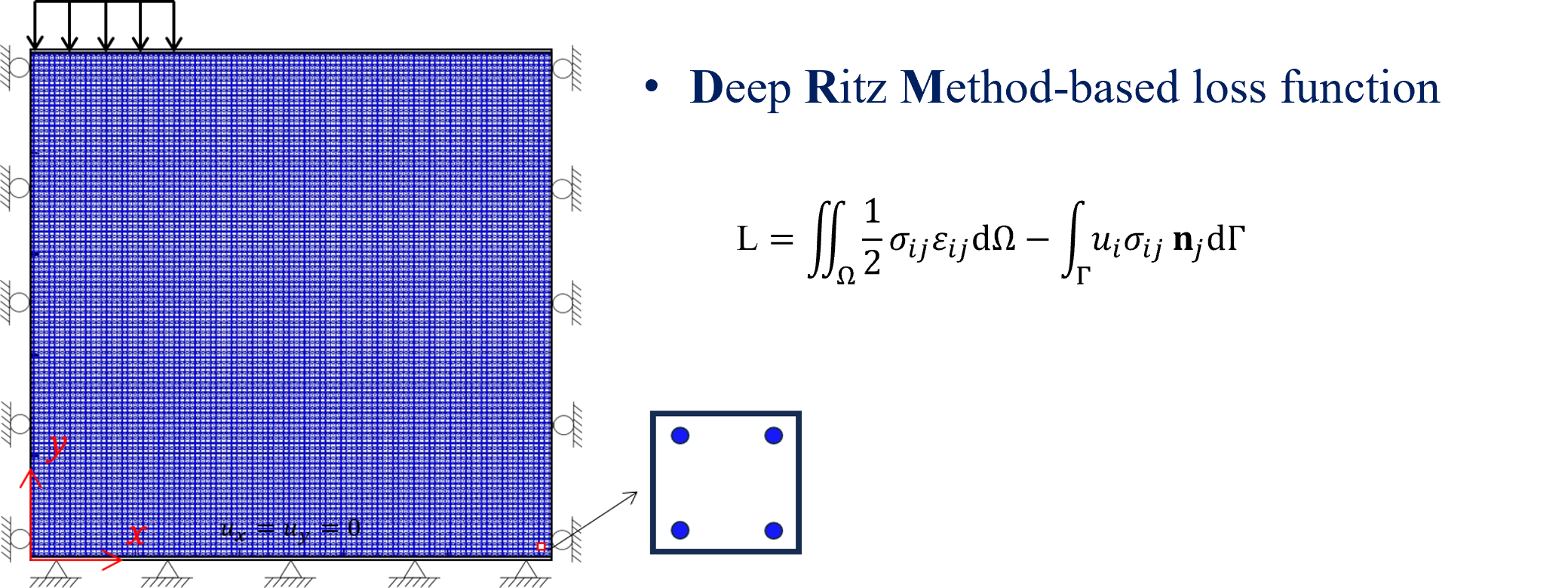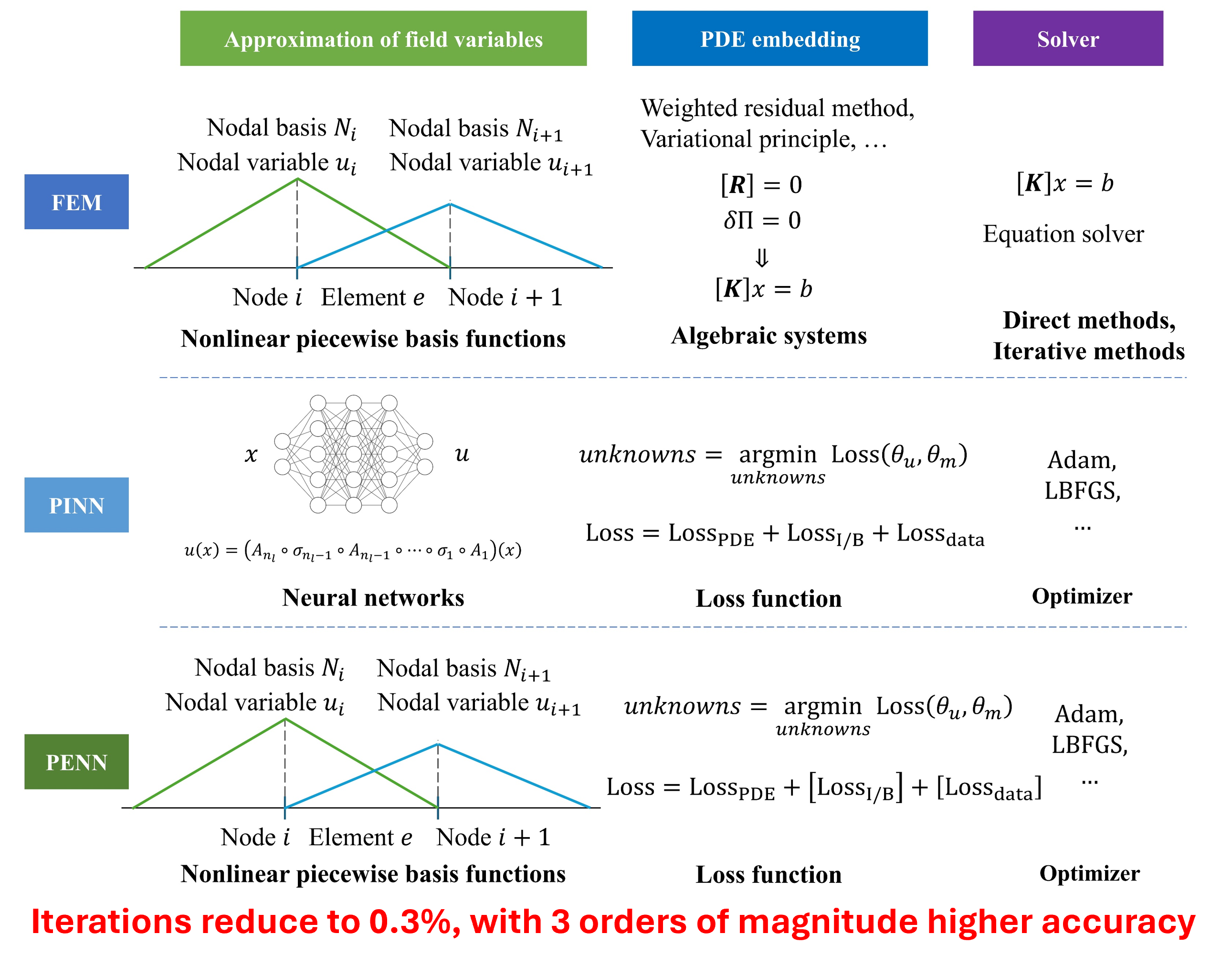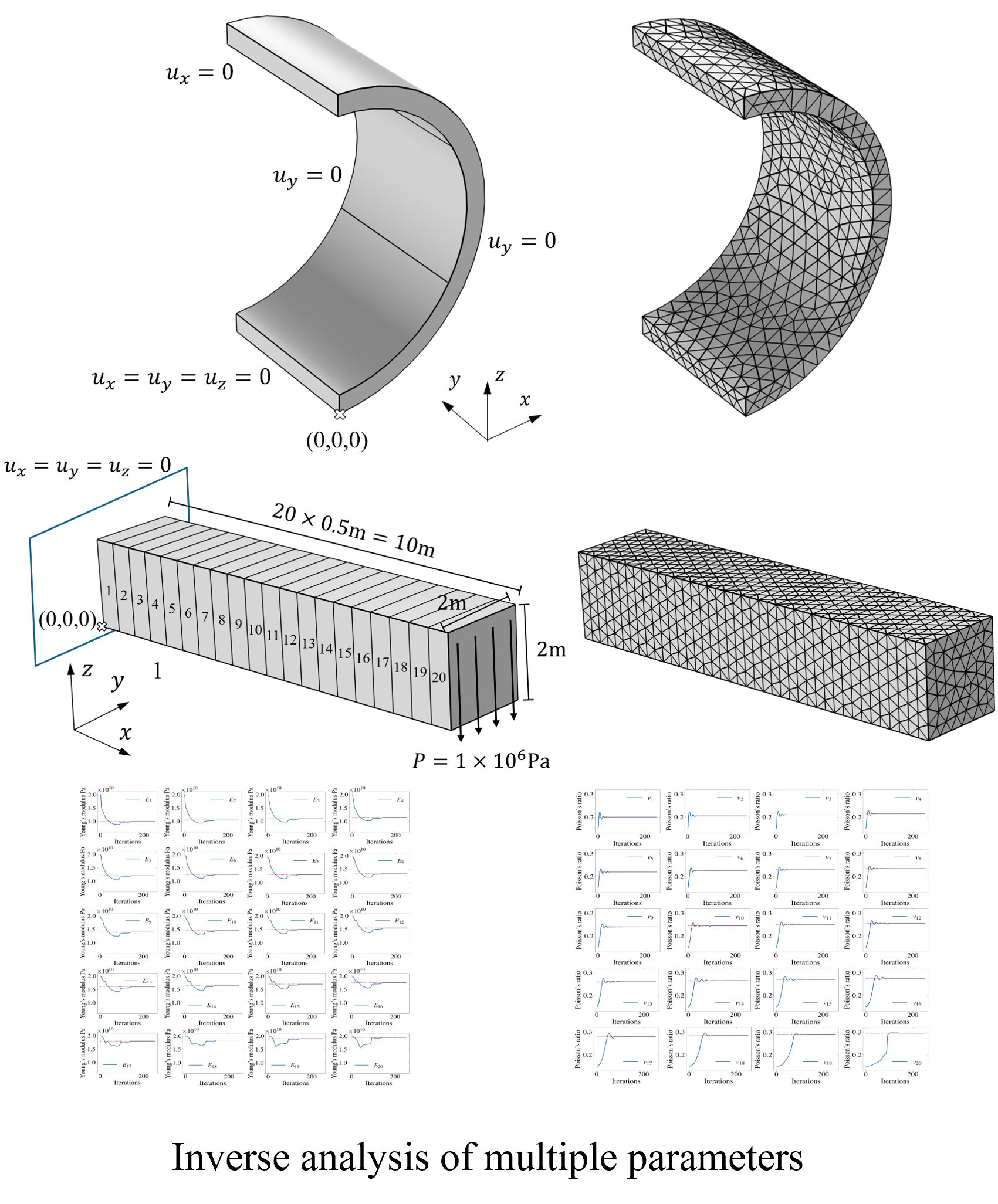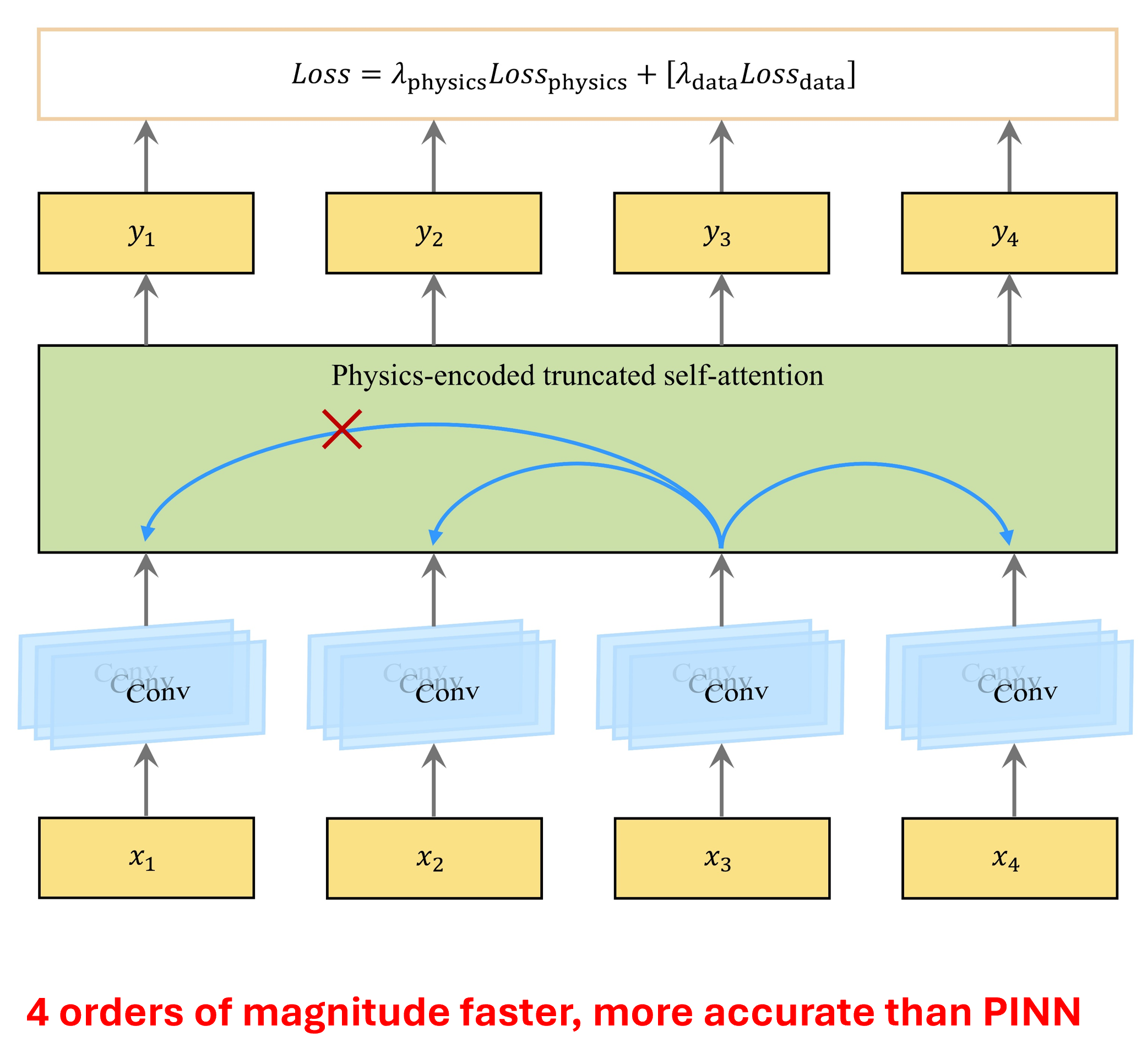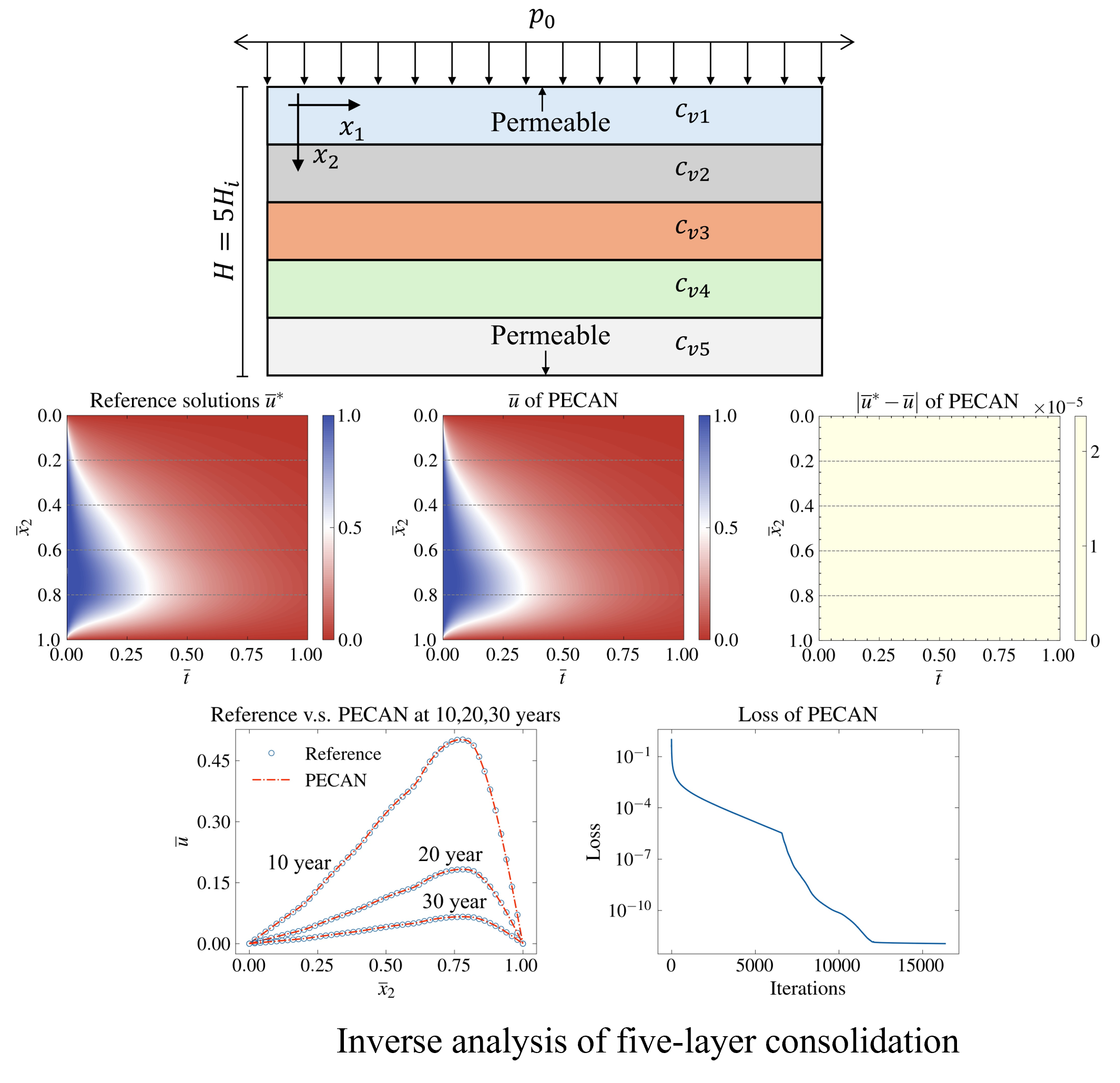Introduction
We have extensively performed the application of AI in geotechnics due to the strong capacity of solving non-linear and high-dimensional problem of AI. For example, the optimization and Bayesian-based methods can bridge the gap between
advanced constitutive theories and engineering practice; ML-based surrogate model can also be applied in engineering practice as the alternative to experimental and numerical methods, saving expenses for engineering design. Currently, we
focuses on the following three topics.
We enhanced several optimization algorithms (DE, GA, BSA…), applied to intelligent properties correlation, the parameters identification and model selection based on laboratory tests or engineering measurements, and applied to excavation
project with intelligent updating of the soil model with parameters.
1.1 Optimization theory: Enhanced backtracking search algorithm
We enhanced an enhanced backtracking search algorithm (so-called MBSA-LS) for parameter identification with two modifications: (1) modifying the mutation of original BSA considering the contribution of current best individual for
accelerating convergence speed and (2) novelly incorporating an efficient differential evolution (DE) as local search for improving the quality of population.
- Jin Y-F, Yin Z-Y. Enhancement of backtracking search algorithm for identifying soil parameters. International Journal for Numerical and Analytical Methods in Geomechanics, 2020, 44(9): 1239-1261.
1.2 Application to properties correlation: intelligent EPR
We proposed a robust and effective evolutionary polynomial regression (EPR) model for mechanical properties of clay using a newly enhanced differential evolution (DE) algorithm with two enhancements: (1) a new fitness function is proposed
using the structural risk minimization (SRM) with L2 regularization that penalizes polynomial complexity, and (2) an adaptive process for selecting the combination of involved variables and size of polynomial terms is incorporated.
- Jin YF, Yin Z-Y (2020). An intelligent multi-objective EPR technique with multi-step model selection for correlations of soil properties. Acta Geotech., 15: 2053–2073.
- Jin YF, Yin Z-Y, Zhou WH, Yin JH, Shao JF (2019). A single-objective EPR based model for creep index of soft clays considering L2 regularization. Eng. Geol., 248(8): 242-255.
1.3 Application to parameters identification, model selection and updating
We proposed a novel optimization-based intelligent model selection procedure in which parameter identification is also performed during staged excavation. As the process of optimization goes on, the soil model exhibiting good performance
during simulation survives from the database and model parameters are also optimized. For each excavation stage, with the selected model and optimized parameters, wall deflection and ground surface settlement of the subsequent unexcavated
stage are predicted.
- Jin Y-F, Yin Z-Y, Zhou W-H, Liu X. Intelligent model selection with updating parameters during staged excavation using optimization method. Acta Geotechnica, 2020, 15(9): 2473-2491.
- Jin Y-F, Yin Z-Y, Zhou W-H, Huang H-W. Multi-objective optimization-based updating of predictions during excavation. Engineering Applications of Artificial Intelligence, 2019, 78: 102-123.
1.4 Optimization tool for parameters identification
In order to conveniently solve the problems of parameter identification in geotechnical engineering, we proposed ErosOpt, that is a practically useful tool. ErosOpt makes it easy to specify and solve geotechnical optimization problems
without expert knowledge, and at the same time it allows experts to implement advanced algorithmic techniques or advanced constitutive models.

- Jin Y-F, Yin Z-Y, Wu Z-X, Zhou W-H. Identifying parameters of easily crushable sand and application to offshore pile driving. Ocean Engineering, 2018, 154: 416-429.
- Yin Z-Y, Jin Y-F, Shen J S, Hicher P-Y. Optimization techniques for identifying soil parameters in geotechnical engineering: Comparative study and enhancement. International Journal for Numerical and Analytical Methods in
Geomechanics, 2018, 42(1): 70-94.
- Yin Z-Y, Jin Y-F, Shen S-L, Huang H-W. An efficient optimization method for identifying parameters of soft structured clay by an enhanced genetic algorithm and elastic–viscoplastic model. Acta Geotechnica, 2017, 12(4):
849-867.
- Jin Y-F, Yin Z-Y, Shen S-L, Hicher P-Y. Selection of sand models and identification of parameters using an enhanced genetic algorithm. International Journal for Numerical and Analytical Methods in Geomechanics, 2016,
40(8): 1219-1240.
RETURN
We proposed the Differential Evolution Transitional MCMC (DE-TMCMC) method. To realize the intended computational savings, a parallel computing implementation of DE-TMCMC was developed using the Single Program/Multiple Data (SPMD)
technique in MATLAB, and applied the Parallel-based DE-TMCMC for parameter identification and model class selection.
Example 1: Parameter identification from PMT by DE-TMCMC
Example 2: Model class selection by DE-TMCMC
- Jin Y-F, Yin Z-Y, Zhou W-H, Horpibulsuk S. Identifying parameters of advanced soil models using an enhanced transitional Markov chain Monte Carlo method. Acta Geotechnica, 2019, 14(6): 1925-1947
- Jin Y-F, Yin Z-Y, Zhou W-H, Shao J-F. Bayesian model selection for sand with generalization ability evaluation. International Journal for Numerical and Analytical Methods in Geomechanics, 2019, 43(14): 2305-2327.
RETURN
3.1 ML-based correlations of soil properties
We adopted a series of machine learning algorithms (e.g. GP = genetic programming; EPR = evolutionary polynominal regression; SVR = support vector regression; RF = random forest; BPNN = backpropagation neural network; ANN_MCD = artificial neural network and Monte Carlo dropout) to propose prediction models for soil properties (e.g. compressibility index of clay, creep index of clay, undrained shear strength of clay, hydraulic conductivity of clay, soil compaction parameters, air-entry value of compacted soils). A machine learning based GUI was also developed for easy to use.
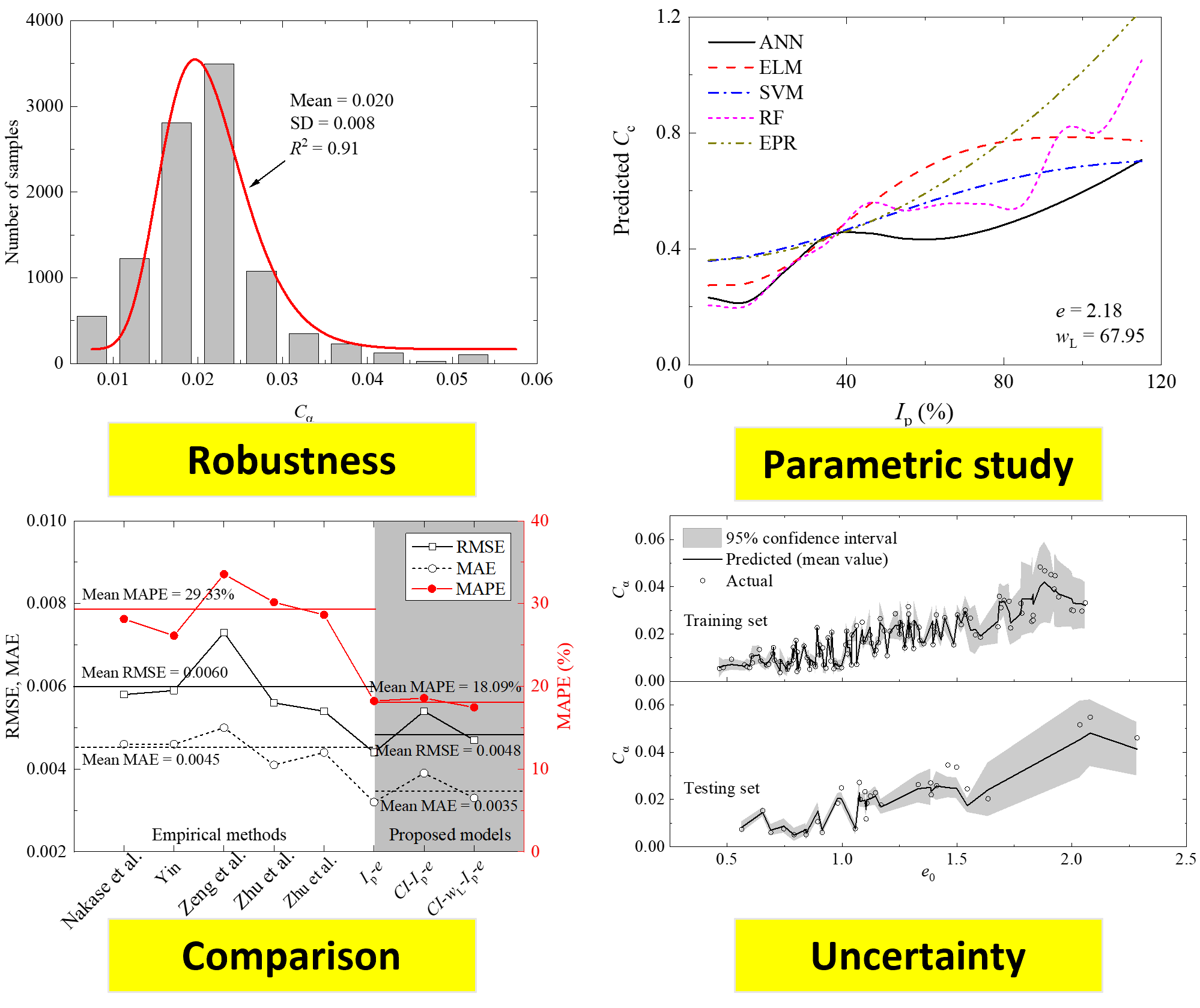

- Zhang P, Yin ZY, Jin YF, 2021. Bayesian neural network-based uncertainty modelling: application to soil compressibility and undrained shear strength prediction. Canadian Geotechnical Journal.
https://doi.org/10.1139/cgj-2020-0751
- Zhang P, Yin ZY, Jin YF, Chan THT, Gao FP, 2021. Intelligent Modelling of Clay Compressibility using Hybrid Meta-Heuristic and Machine Learning Algorithms. Geoscience Frontiers, 12, 1, 441-452
- Zhang P, Yin ZY, Jin YF, Chan THT, 2020 A Novel Hybrid Surrogate Intelligent Model for Creep Index Prediction based on Particle Swarm Optimization and Random Forest. Engineering Geology. 265, 105328
- Wang HL#, Yin Z-Y, Zhang P, Jin YF (2020). Straightforward prediction for air-entry value of compacted soils using machine learning algorithms. Eng. Geol., 279: 105911.
- Wang HL#, Yin Z-Y (2020). High performance prediction of soil compaction parameters using multi expression programming. Eng. Geol., 276: 105758.
We equipped traditional machine learning algorithms with uncertainty quantification (e.g. BNN = Bayesian neural network; QRF = Quantile random forest; VIEPR = Variational inference evolutionary polynomial; BSVR = Bayesian support vector regression; NNGP= Neural network based Gaussian process) to develop prediction models for soil properties (e.g. compressibility index of clay, creep index of clay, undrained shear strength of clay, hydraulic conductivity of clay, soil compaction parameters, air-entry value of compacted soils).
1. Multi-fidelity learning is proposed to fuse low- and high-fidelity data from multiple sources for reducing data demand.
2. Active learning is proposed to navigate data acquisition and save acquisition costs.
3. A used-friendly platform is developed such that click is all users need to build ML-based models.
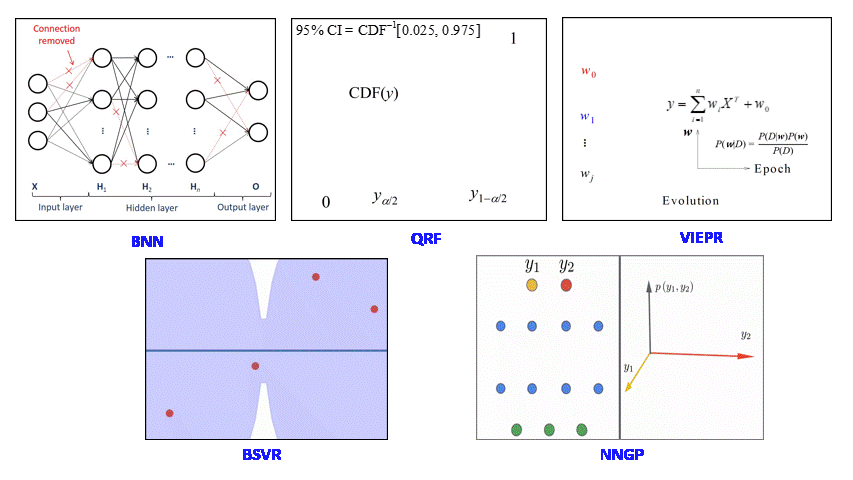


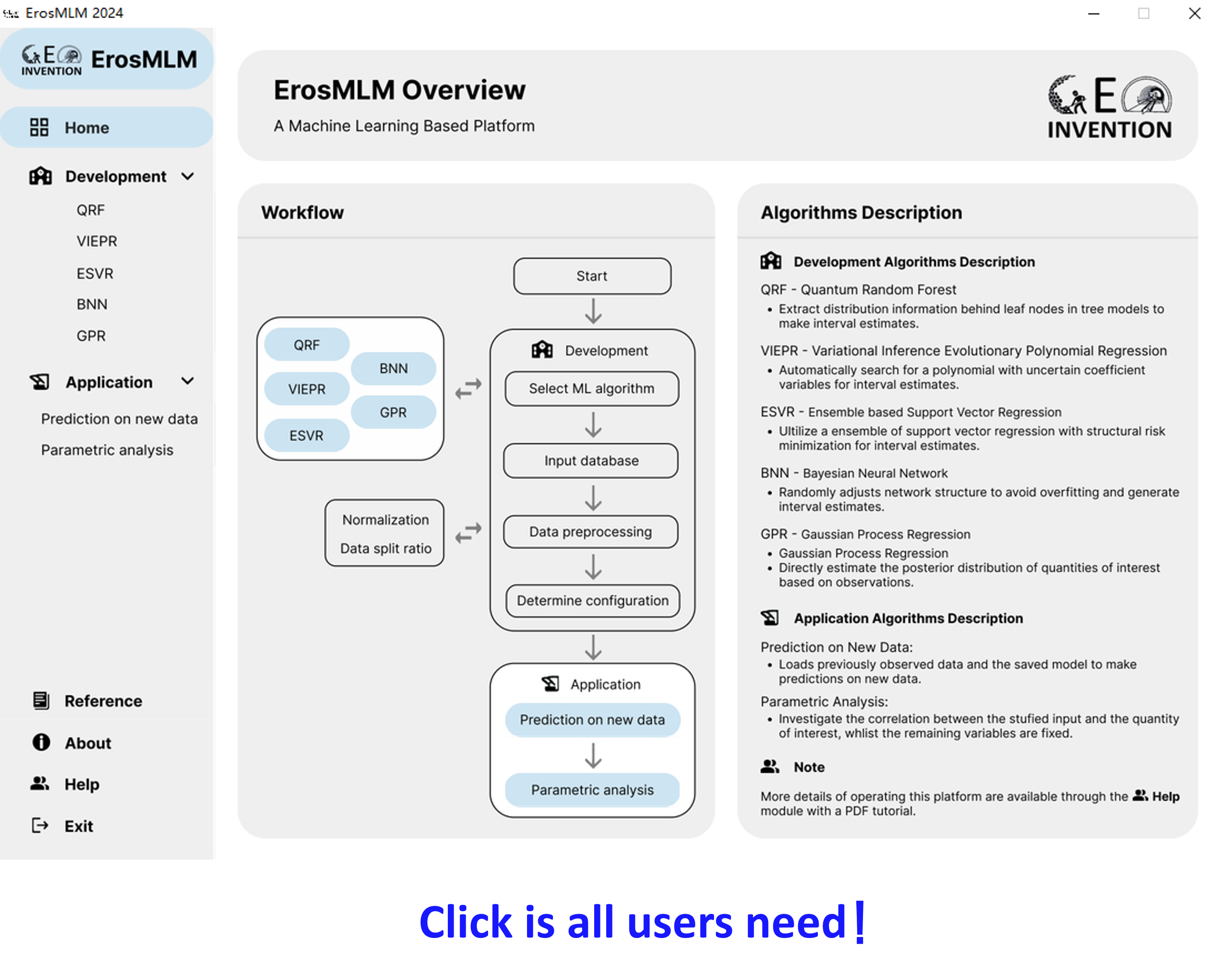
- He, GF, Zhang, P, and Yin, ZY*, 2025. Uncertainty quantification in data-driven modelling with application to soil properties prediction. Acta Geotechnica. https://doi.org/10.1007/s11440-024-02484-9.
- He, GF, Zhang, P, and Yin, ZY*, 2025. Uncertainty quantification in tree structure and polynomial regression algorithms toward material indices prediction. Data-Centric Engineering. https://doi.org/10.1017/dce.2025.5.
- He, GF, Zhang, P, and Yin, ZY*. 2024. Active learning inspired multi-fidelity probabilistic modelling of geomaterial property. Computer Methods in Applied Mechanics and Engineering. https://doi.org/10.1016/j.cma.2024.117373.
- He GF, Zhang P, Yin ZY*, Goh SH. 2024. Multifidelity-based Gaussian process for quasi-site-specific probabilistic prediction of soil properties. Canadian Geotechnical Journal. https://doi.org/10.1139/cgj-2023-0641.
- He GF, Zhang P, Yin ZY*, Jin YF, Yang Y. 2023. Multi-fidelity data-driven modelling of rate-dependent behavior of soft clays. Georisk: Assessment and Management of Risk for Engineered Systems and Geohazards. https://doi.org/10.1080/17499518.2022.2149815.
- Zhang P, Yin ZY*, Jin YF, 2021. Machine Learning-Based Modelling of Soil Properties for Geotechnical Design: Review, Tool Development and Comparison. Archives of Computational Methods in Engineering.https://doi.org/10.1007/s11831-021-09615-5.
3.2 ML-based image reconstruction and identification of geomaterials
A hybrid machine learning algorithm was proposed to segment computed tomography (CT) images then kernel-based algorithm combined with level set was proposed to automatically reconstruct particles in a CT image. The reconstructed particle
was fed to a three-dimensional convolutional neural network based particle shape prediction model to obtain commonly used shape parameters such as aspect ratio, roundness, circularity and convexity.
- Zhang P, Yin ZY, Jin YF. 2021. Three-dimensional quantitative analysis on granular particle shape using convolutional neural network. International Journal for Numerical and Analytical Methods in Geomechanics
- Zhang P, Yin ZY, Chen WB, Jin YF, 2021. CNN-based Intelligent Method for Identifying GSD of Granular Soils. International Journal of Geomechanics, 21(12), 04021229
3.3 ML-based modelling of soil behaviours
We adopted a series of machine learning algorithms to model path-dependent soil behaviour and found that the long short-term memory neural network outperforms other machine learning algorithm in this problem. LSTM-based data-driven model has been successfully applied to model monotonic and cyclic soil behaviour on Baskarp sand, Fontainebleau sand and Toyoura sand, as well as from a soil sample image to directly extract macro-scale mechanical behaviour.
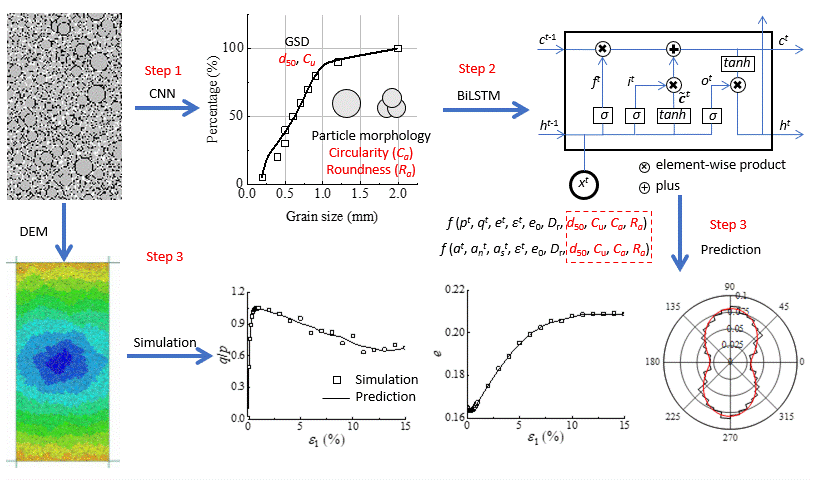
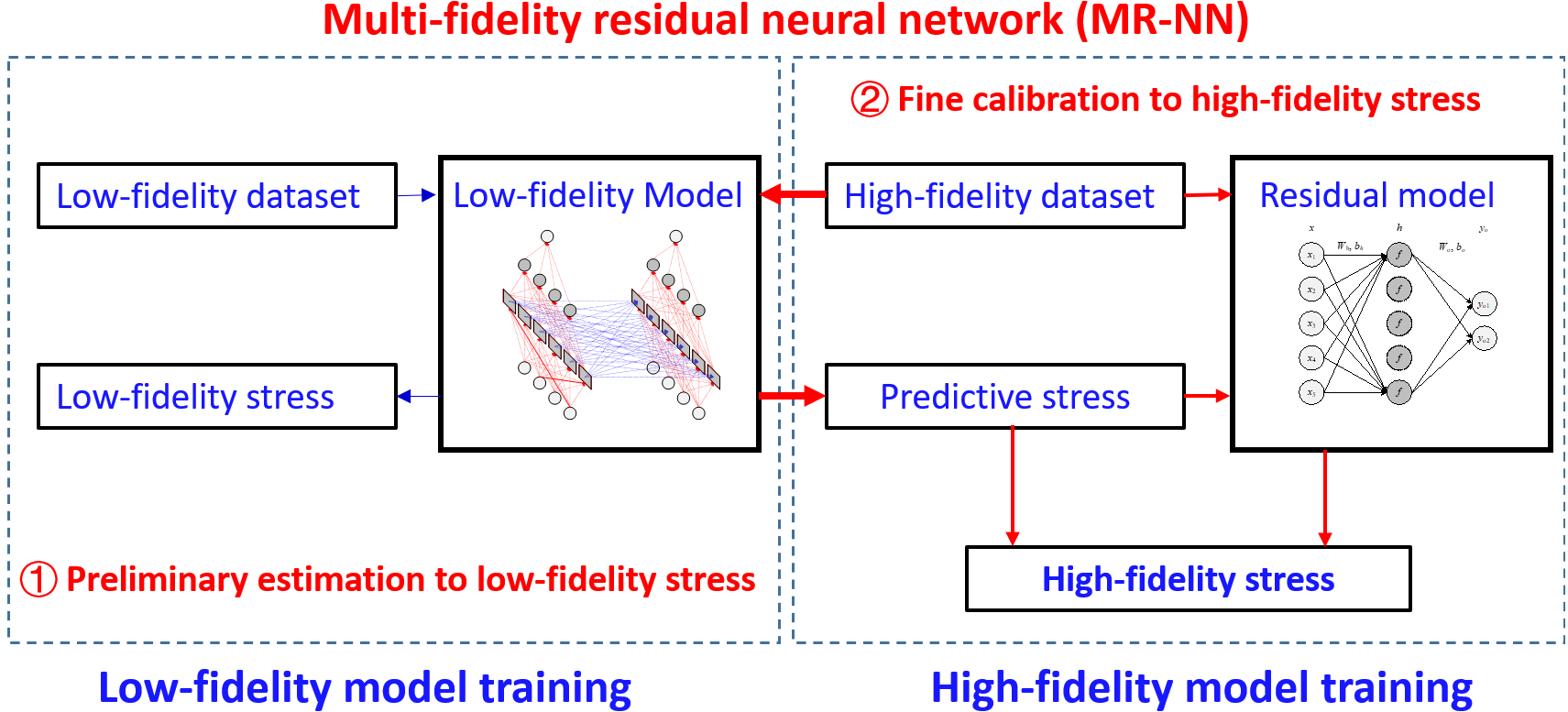
- Zhang P, Yin ZY, 2021. A novel deep learning-based modelling strategy from image of particles to mechanical properties for granular materials with CNN and BiLSTM. Computer Methods in Applied Mechanics and Engineering, 382, 113858
- Zhang P, Yin ZY, Jin YF, 2021. State-of-the-Art Review of Machine Learning Applications in Constitutive Modeling of Soils. Archives of Computational Methods in Engineering, https://doi.org/10.1007/s11831-020-09524-z
- Zhang P, Yin ZY, Jin YF, Ye GL, 2020. An AI-based model for describing cyclic characteristics of granular materials. International Journal for Numerical and Analytical Methods in Geomechanics, 44, 9: 1315-1335
- Zhang P, Yin ZY, Jin YF, Liu XF. 2021. Modelling the mechanical behaviour of soils using machine learning algorithms with explicit formulations. Acta Geotechnica. https://doi.org/10.1007/s11440-021-01170-4
- 1. Zhang P, Yin ZY, Sheil B, 2024. Multifidelity constitutive modeling of stress-induced anisotropic behavior of clay, Journal of Geotechnical and Geoenvironmental Engineering-ASCE, 150(3), 04024003
- 2. Zhang P, Yin ZY, Sheil B, 2023. Interpretable data-driven constitutive modelling of soils with sparse data. Computers and Geotechnics, 160, 105511
3.4 Application of ML models in engineering practice
Data-driven based constitutive model was integrated with finite element method for modelling engineering-scale problem. A physics-informed learning mechanism was invoked to improve the generalization ability of the data-driven model. To
reduce the dependency on the high-fidelity data and architecture of the neural network, a multi-fidelity residual training framework was proposed and used to develop surrogate model for engineering practice.

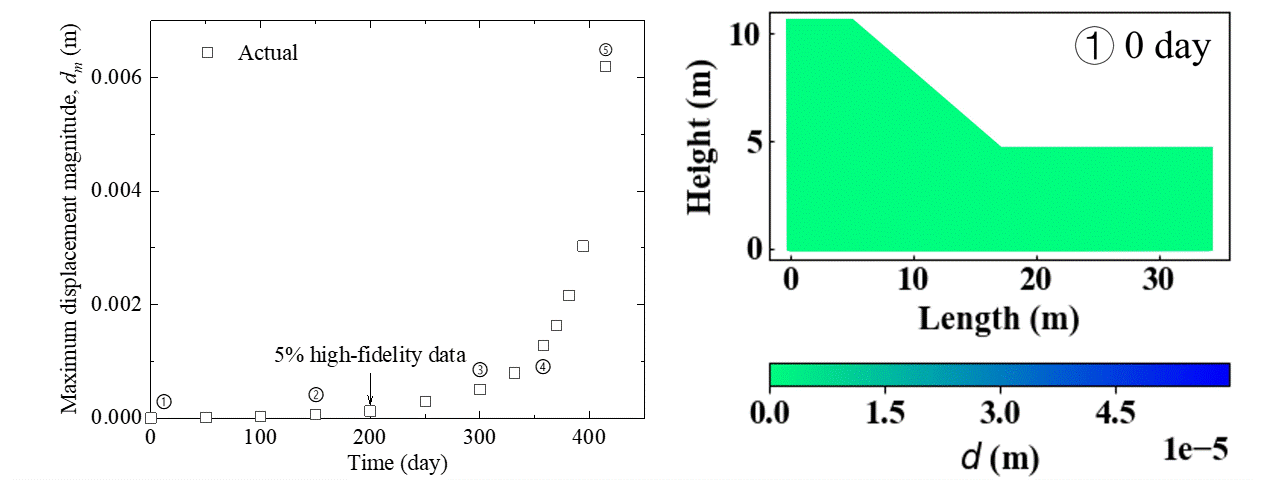
- Zhang P, Yin Z-Y, Jin YF, Yang J, Sheil B (2022). Physics-Informed Multi-Fidelity Residual Neural Networks for Hydromechanical Modelling of Granular Soils and Foundation Considering Internal Erosion. J. Eng. Mech. ASCE,
accepted.
- Zhang P, Jin YF, Yin ZY. 2021. Machine learning–based uncertainty modeling of mechanical properties of soft clays relating to time-dependent behavior and its application. International Journal for Numerical and Analytical
Methods in Geomechanics, 45(11), 1588-1602
- Zhang P, Yin ZY, Zheng YY, Gao FP, 2020. A LSTM surrogate modelling approach for caisson foundations. Ocean Engineering, 204, 107263
- Zhang P, Jin YF, Yin ZY, Yang Y, 2020. Random forest based artificial intelligent model for predicting failure envelopes of caisson foundations in sand. Applied Ocean Research, 101, 102223
3.5 AI-Powered Geological Reconstruction Method
Extract key stratigraphic features and spatial distribution patterns from sparse borehole and CPTu data
Enable accurate 3D modeling of complex geological structures
- Qiu, Y.S., Zhang, N., Yin, Z-Y, Wang, Y., Xu, C.J., Zhang, P. (2024). Novel multi-spatial receptive field (MSRF) XGBoost method for predicting geological cross-section based on sparse borehole data. Engineering Geology, 107604. https://doi.org/10.1016/j.enggeo.2024.107604
- Qiu, Y.S., Yin, J.N., Zhang, N., Liu, H.C., Xu, C.J. (2024). Novel graph convolutional network for geological profile prediction using non-equidistant borehole data. Georisk: Assessment and Management of Risk for Engineered Systems and Geohazards, 1-15. https://doi.org/10.1080/17499518.2024.2422489
AI-Driven 3D Geological Modeling Software - GeoGM
Independently developed and integrated preprocessing, intelligent modeling, postprocessing, and visualization
Derive from raw data to detailed 3D model in a single click
- Liu, H.C., Zhang, N., Yin, Z-Y. (2025). Probabilistic stratigraphic modeling from sparse boreholes based on deep learning. Geotechnique, Ahead of Print. https://doi.org/10.1680/jgeot.24.00998
- Liu, H.C., Zhang, N.*, Yin, Z-Y., Wang, Y. (2025). Interpretation of subsurface stratigraphic variations from limited boreholes using Dual Bi-LSTM. Canadian Geotechnical Journal, 62, 1–15. https://doi.org/10.1139/cgj-2024-0455
3.6 Geotechnical Design Large Language Model - a hybrid-augmented intelligence platform
Enable multi-modal input (text, image), Human-AI collaborative and multi-module design
Perform bearing capacity calculation, settlement analysis, and automated drafting tasks
- Xu, H.R., Zhang, N., Yin, Z-Y., Atangana Njock, P.G. (2025). Multimodal intelligent geotechnical design framework integrating multiple large language models. Automation in Construction, 176, 106257. https://doi.org/10.1016/j.autcon.2025.106257
- Xu, H.R., Zhang, N., Yin, Z-Y., Atangana Njock, P.G. (2025). GeoLLM: A Specialized Large Language Model Framework for Intelligent Geotechnical Design. Computers and Geotechnics, 77, 106849. https://doi.org/10.1016/j.compgeo.2024.106849
- Atangana Njock, P. G., Yin, Z-Y., Xu, H. R., Zhang, N. (2025). Structural Failure Risk Assessment of Shield Tunnel using Large Language Model. Tunnelling and Underground Space Technology, 165, 106882. https://doi.org/10.1016/j.tust.2025.106882
3.7 Physics-informed neural networks (PINNs) for fast solution and scientific discovery in boundary value problems
Physics-Informed Neural Networks (PINNs) represent a novel computational paradigm with the potential to substantially enhance the speed of forward and inverse analyses in traditional numerical methods, as well as improve the handling of sparse and noisy data. We have advanced PINNs by developing novel differentiable numerical methods, aimed at pioneering next-generation numerical techniques for digital twins and AI for Science. Our work is structured into three components: (1) PDE discovery and solving in spatial-temporal dynamics; (2) Incorporating more realistic and complex constitutive models in solving boundary value problems; (3) Physics-Encoded Numerical Networks (PINN+FEM; PINN+FDM) for multidimensional heterogeneous forward and inverse discovery.
(1.1) PDE discovery and solving in spatial-temporal dynamics
- Zhang, P., Yin, Z. Y., & Sheil, B. (2024). A physics-informed data-driven approach for consolidation analysis. Géotechnique, 74(7), 620-631.
- Zhang, P., Yin, Z. Y., Jin, Y. F., Yang, J., & Sheil, B. (2022). Physics-informed multifidelity residual neural networks for hydromechanical modeling of granular soils and foundation considering internal erosion. Journal of Engineering Mechanics, 148(4), 04022015.
(1.2) PDE discovery and solving in spatial-temporal dynamics
- Guo, H., & Yin, Z. Y. (2024). A novel physics-informed deep learning strategy with local time-updating discrete scheme for multi-dimensional forward and inverse consolidation problems. Computer Methods in Applied Mechanics and Engineering, 421, 116819.
(2.1) Forward and inverse analysis of nonlinear elastoplasticity
- Chen, X. X., Zhang, P., & Yin, Z. Y. (2025). A comprehensive investigation of physics-informed learning in forward and inverse analysis of elastic and elastoplastic footing. Computers and Geotechnics, 181, 107110.
(2.2) Forward and inverse analysis of nonlinear elastoplasticity
- Zhang, N., Xu, K., Yin, Z. Y., & Li, K. Q. (2025). Transfer learning-enhanced finite element-integrated neural networks. International Journal of Mechanical Sciences, 290, 110075.
(3.1) Physics-encoded numerical network for multidimensional heterogeneous forward and inverse discovery
- Wang, X., Yin, Z. Y., Wu, W., & Zhu, H. H. (2025). Differentiable finite element method with Galerkin discretization for fast and accurate inverse analysis of multidimensional heterogeneous engineering structures. Computer Methods in Applied Mechanics and Engineering, 437, 117755.
(3.2) Physics-encoded convolutional attention network
- Wang, X., & Yin, Z. Y. (2025). Physics-encoded convolutional attention network for forward and inverse analysis of spatial-temporal parabolic dynamics considering discontinuous heterogeneity. Computer Methods in Applied Mechanics and Engineering, 442, 118025.
RETURN

